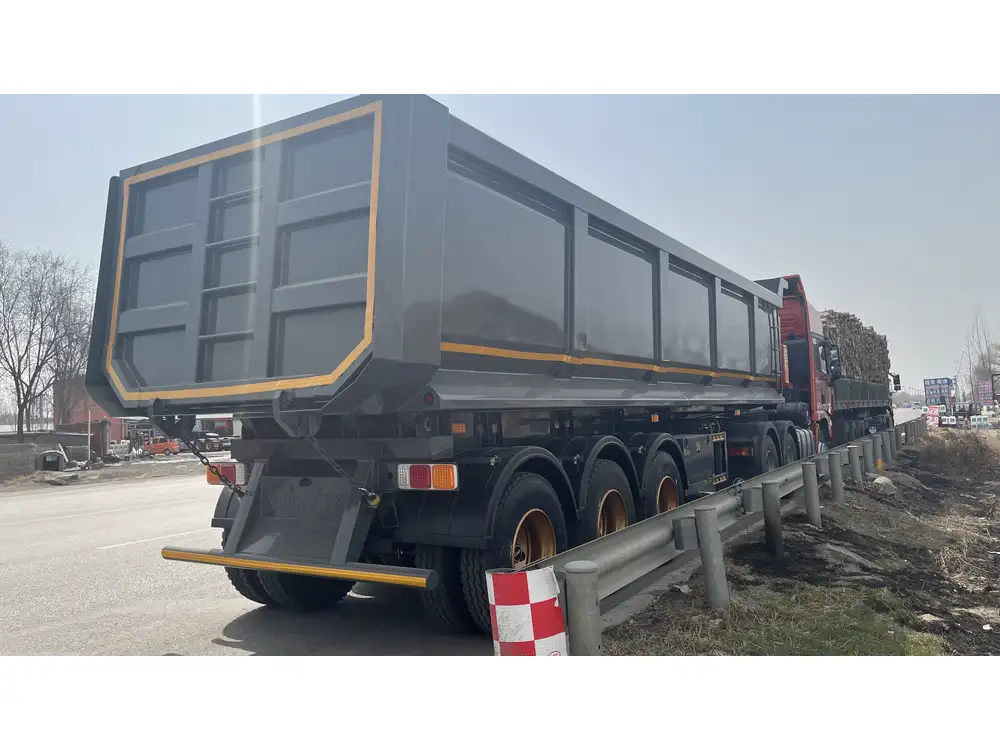The logistics and transportation industry is an intricate realm, constantly evolving with increasing demands and challenges. One often-asked question among shippers, transport managers, and businesses is, “How many pallets fit in a semi-trailer?” This inquiry, while seemingly straightforward, encompasses a myriad of factors including the type of pallets used, the dimensions of the semi-trailer, loading configurations, and legal weight limits.
Pallet Types and Dimensions
To accurately determine how many pallets can fit in a semi-trailer, it’s crucial first to identify the type of pallets in use, as various designs possess different dimensions and specifications.
| Pallet Type | Dimensions (inches) | Dimensions (mm) | Typical Weight Capacity |
|---|---|---|---|
| Standard GMA | 48 x 40 | 1219 x 1016 | Up to 2,500 lbs |
| European Pallet | 47.2 x 31.5 | 1200 x 800 | Up to 2,200 lbs |
| Australian Pallet | 48 x 40 (sometimes 48 x 45) | 1200 x 1000 | Up to 2,700 lbs |
Standard GMA Pallet (48 x 40 inches): Predominant in the United States, these pallets are designed to efficiently utilize space on trailers and in warehouses.
European Pallet (47.2 x 31.5 inches): More common in Europe, these pallets are slightly smaller, which may affect the total capacity inside a semi-trailer.
Australian Pallet: Often slightly wider, these pallets can take up more space depending on the variation.
Semi-Trailer Dimensions
The next step in our analysis is to acknowledge the common dimensions of semi-trailers. Typically, a standard semi-trailer has the following specifications:
| Type of Trailer | Length (feet) | Width (feet) | Height (feet) |
|---|---|---|---|
| 48-foot van trailer | 48 | 8.5 | 13.5 |
| 53-foot van trailer | 53 | 8.5 | 13.5 |
| Reefer trailer | 48 or 53 | 8.5 | 13.5 |
Most semi-trailers used for freight transport can accommodate both 48-foot and 53-foot configurations.

Calculating Pallet Capacity
The pallet capacity of a semi-trailer can be gauged through a straightforward formula. Here’s how it works:
Determine the floor area of the trailer.
- For a 53-foot trailer:
- Area = Length × Width = 53 × 8.5 = 450.5 square feet.
Calculate the area occupied by one pallet for the GMA:
- Area = 4 × 3.33 = 12 square feet.
Total Number of Pallets:
- Total Pallets ≈ Total Area of Trailer / Area of one pallet
- 450.5 / 12 ≈ 37.54, or approximately 37 GMA pallets.
Layering Capacity
However, most trailers allow stacking of pallets, typically up to two layers when dealing with standard containers, and even more in specific configurations that ensure safe transport. Thus, if a semi-trailer can contain approximately 37 pallets in a single layer, in theory, it can accommodate 74 pallets if stacked.
Nonetheless, stackability depends significantly on:
- Pallet type and materials.
- The weight distribution and regulations regarding maximum weight limits.
Regulations Impacting Pallet Capacity
When considering how many pallets fit into a semi-trailer, it’s vital to account for regulatory compliance. Most countries and regions enforce strict weight limits for commercial vehicles. In the United States, the federal maximum weight limit for a semi-trailer is generally 80,000 pounds.

Weight Considerations
Consider this simplified method for calculating total weight:
- Average weight of a GMA pallet: 2,500 lbs
- Weight of the trailer itself: Approximately 30,000 lbs
- Remaining payload capacity: 80,000 lbs – 30,000 lbs = 50,000 lbs.
This means the semi-trailer can safely carry:
- Up to 20 GMA pallets at full capacity (20 × 2,500 lbs = 50,000 lbs).
Therefore, while a 53-foot trailer could potentially hold 74 pallets (in two layers), actual maximum capacity often limits them to 20 pallets based on weight alone.
Selecting the Right Configuration
The configuration of pallets inside a semi-trailer can also impact overall capacity and loading efficiency. Here is how various configurations can influence loading.
Standard Configuration
The most common configuration involves placing pallets side by side in a straightforward layout. This method ensures easy access and distribution while maximizing available space.

Stacking Pallets
As mentioned, stacking is feasible; however, it invites certain concerns such as:
- Safety: Stability of stacked pallets.
- Weight Distribution: Ensuring even weight across the trailer to prevent unwanted strain on axles.
Other Configurations:
- Block Stacking: Where pallets are stacked directly on top of each other in a square formation. Maximizes space but may require additional handling equipment.
- Stacking with Slip Sheets: An alternative often utilized where pallets are absent. Not only does it reduce weight but also accommodates more cargo.
Strategic Packing
Efficiency can be enhanced by considering the following packing strategies:
- Vertical Space Use: Utilize height where allowed.
- Mixed Pallet Types: Design shipments using various pallet sizes to accommodate more pallets without exceeding weight limits.
- Tilted Pallet Layout: Arranging pallets at angles can create interesting space efficiency and protect fragile items.

Conclusion: Navigating the Semi-Trailer Capacity Challenge
Understanding how many pallets fit in a semi-trailer isn’t just a matter of simple calculations; it’s a complex interplay of dimensions, weight, stackability, and compliance with regulations. By analyzing the dimensions of pallets and semi-trailers, combined with regulations, companies can make informed decisions about optimizing their freight capacities.
Key Takeaways:
- Standard 53-foot semi-trailer can theoretically hold up to 74 pallets stacked but regulations often mean only 20 for safety and weight compliance.
- Careful measuring and configuration planning can greatly enhance pallet capacity and efficiency.
- Considering various factors—type of pallet, payload regulations, safety issues—will allow a logistics manager to maximize trailer contributions to their supply chains.
As trends in e-commerce and logistics continue to shift, staying updated on these considerations will prove invaluable for maximizing operational efficiencies and maintaining competitive advantage in the transport landscape.



